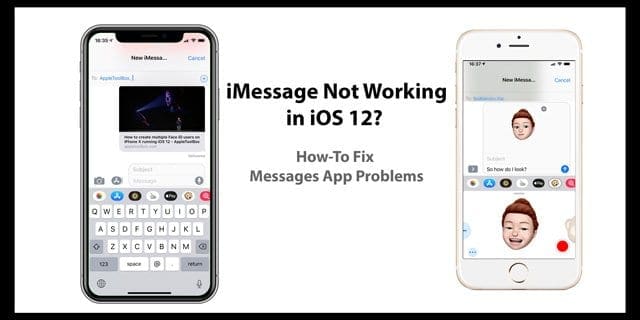

Look for Message History and select from Keep Messages Forever, 1 year, or 30 days. There is also a new delete messages automatically after 30 days option in Settings > Messages. Or you can tap the Edit button in the top left-hand corner and delete messages that way. To delete messages you can swipe from right to left on a message in the Messages list and choose delete. It seems that some people have fixed iMessage problems by deleting some old Messages. If your Messages app has a lot of content it might slow down a bit. IMessages can be pretty weighty, especially if you send a lot of photos and videos. Then sign in again and see if that fixed it. You can do this from Settings > Messages then tap on Send & Receive and at the top of the page tap on your Apple ID and choose Sign Out.
#Text messages on mac not working how to#
If it ever stops working again, you should be able to return to this article for a reminder on how to sync messages from your iPhone to your Mac or your iPhone to your iPad. Also, if your iPhone isn't showing up in Finder when you connect it to your Mac, we can show you how to fix it! Master your iPhone in one minute a day: Sign up here to get our FREE Tip of the Day delivered right to your inbox.Sign out of your Apple ID and then sign in again.

Here's how to adjust iPad Settings so you can sync messages from iPad to iPhone and iPad to Mac. Under Start new conversations from: select the same thing (phone number or email) that you did on the iPhone.įor example, I chose my phone number on iPhone, which means I’m also going to select my phone number on my Mac (and my iPad).Under You can be reached for messages at: make sure you’ve checked your phone number and all the emails you use for messages, including your Apple ID email.Make sure it’s the same as the Apple ID you're logged in with on your iPhone. Near the top, you’ll see your Apple ID.Click iMessage at the top of the pop-up box.Click Messages on the Menu, then click Preferences.If you’re not already logged in, Messages will prompt you to do so.On Mac, open the Messages app it will be in your Applications folder.Here's how to adjust Mac Settings so you can sync messages from Mac to iPhone and Mac to iPad. Under You Can be Reached by FaceTime at, make sure your phone number and Apple ID are checked.Now go back to Settings and tap FaceTime.Make a mental note of this, because you need to make sure you’re using the same one on iPad and Mac too. You’ll see your Apple ID at the bottom.Under Start New Conversations From, select your phone number, unless you have a strong preference for one of your email addresses.Under You Can Receive iMessages to and Reply From, make sure your phone number, Apple ID, and other emails you use for iMessage are checked.If Use your Apple ID for iMessage pops up, tap it and sign in with the Apple ID you use on the Apple devices you want to sync with.Make sure iMessage is toggled on (it may take a moment to activate).Here's how to adjust iPhone Settings so you can sync messages from iPhone to Mac and iPhone to iPad. Prepare iPhone to Sync Messages on Mac & iPad How to Sync iPhone & iPad Text Messages.How to Sync Messages from iPhone to Mac.Prepare iPhone to Sync Messages on Mac & iPad.For more great tutorials about Apple's Messages app, check out our free Tip of the Day. Setting that up, as well as making sure all your devices are using the same Apple ID, will allow you to sync text messages from iPhone to iPad and from iPhone to Mac. This problem can be fixed by making sure your iPhone, iPad, and Mac have all enabled your phone number and emails as ways to send and receive messages. When iMessage isn’t syncing between your devices, it’s usually a communication issue in Apple’s Continuity feature.


 0 kommentar(er)
0 kommentar(er)
